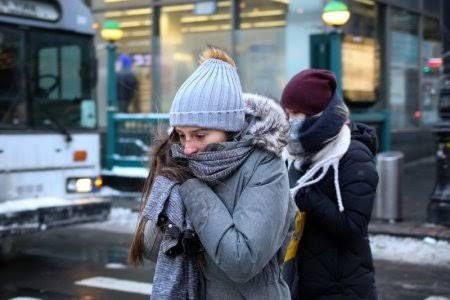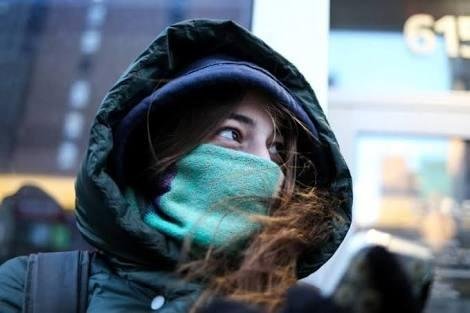Brutal, dangerous cold grips East Coast

Much of the U.S. East Coast will wake up on Saturday to brutally cold and dangerous temperatures as the region recovers from a powerful blizzard that unleashed heavy snows and strong winds.
From northern Florida up through New York City into New England, tens of millions of people will be under wind chill and freeze warnings throughout the day as temperatures in some parts to the north were expected to be -40 F (-40 C), while in parts of the south highs were forecast to be 20 degrees below average.
"It can be very dangerous," said Dan Pydynowski, a meteorologist with private forecasting service AccuWeather. "Any kind of exposed skin can freeze in a couple of minutes."

The cold snap comes as workers clear snow and ice from roadways after a blizzard clobbered the region on Thursday and Friday, forcing hundreds of schools to close, major airports to shut down because of whiteout conditions and several commuter rail services to suspend or reduce service.
The region's first snow storm of 2018 featured gusts of more than 70 miles per hour (113 km per hour), dumping 22 inches (56 cms) of snow in parts of Maine and 17 inches (43 cm) in parts of Massachusetts, before ending on Friday, the National Weather Service said.
The storm was powered by a rapid drop in barometric pressure that some weather forecasters called a bombogenesis, or a "bomb cyclone."
The cold and snowy weather have been blamed for at least 18 deaths in the past few days, including four in North Carolina traffic accidents and three in Texas.
Cities from Houston to Boston have stepped up efforts to bring the homeless to shelters. Authorities said three homeless people in Texas died from exposure to the cold.
Canada's largest city, Toronto, scrambled to find emergency shelter for the homeless as temperatures dropped to record lows after the sweeping storm knocked out power to tens of thousands in eastern provinces and destroyed coastal roads.
Nearly 500 members of the U.S. National Guard were mobilized to assist with the emergency response along the East Coast, including 200 in New York state, authorities said.
(Additional reporting by Brendan O'Brien in Milwaukee; Editing by Mark Potter)